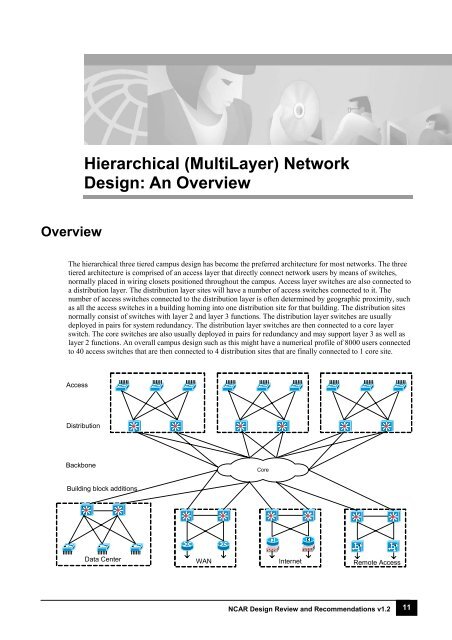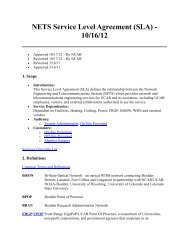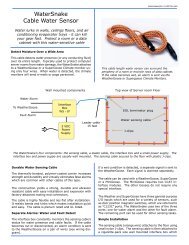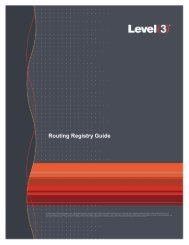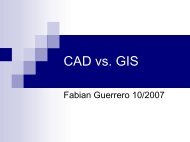Design Review Template - NETS
Design Review Template - NETS
Design Review Template - NETS
You also want an ePaper? Increase the reach of your titles
YUMPU automatically turns print PDFs into web optimized ePapers that Google loves.
Hierarchical (MultiLayer) Network<br />
<strong>Design</strong>: An Overview<br />
Overview<br />
The hierarchical three tiered campus design has become the preferred architecture for most networks. The three<br />
tiered architecture is comprised of an access layer that directly connect network users by means of switches,<br />
normally placed in wiring closets positioned throughout the campus. Access layer switches are also connected to<br />
a distribution layer. The distribution layer sites will have a number of access switches connected to it. The<br />
number of access switches connected to the distribution layer is often determined by geographic proximity, such<br />
as all the access switches in a building homing into one distribution site for that building. The distribution sites<br />
normally consist of switches with layer 2 and layer 3 functions. The distribution layer switches are usually<br />
deployed in pairs for system redundancy. The distribution layer switches are then connected to a core layer<br />
switch. The core switches are also usually deployed in pairs for redundancy and may support layer 3 as well as<br />
layer 2 functions. An overall campus design such as this might have a numerical profile of 8000 users connected<br />
to 40 access switches that are then connected to 4 distribution sites that are finally connected to 1 core site.<br />
Access<br />
Distribution<br />
Backbone<br />
Core<br />
Building block additions<br />
Data Center<br />
WAN Internet Remote Access<br />
NCAR <strong>Design</strong> <strong>Review</strong> and Recommendations v1.2 11


